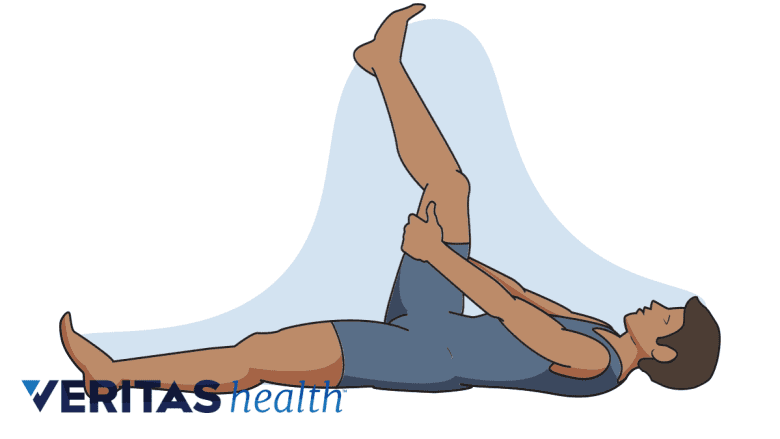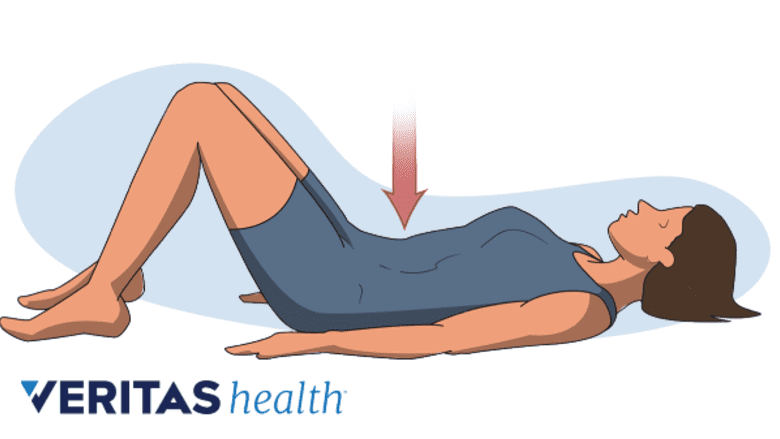The lumbar stabilization exercise program includes a range of exercises that typically progress from beginning to more advanced:
- From static (lying) to dynamic (standing or jumping)
- From resisting gravity to resisting additional outside force
- From predictable to unpredictable movements
- From individual components of a movement to the complete range of motion in a movement
At all times the neutral spine position is maintained. Progression to the next exercise generally depends on learning to maintain the neutral spine properly during the current exercise. The physical therapist or exercise therapist is trained to help the patient learn the proper technique.
The exercises below are a small subset of those a therapist may recommend. The spine specialist and therapist design each lumbar stabilization exercise program specifically for each patient based on the patient's condition.
In This Article:
- Lower Back Stabilization Exercises for Back Pain
- Lumbar Spine Stabilization Exercises
- Video: Why is Exercise Important for Lower Back Pain?
Examples of Exercises
Hamstring Stretch
Hamstring stretches promote flexibility and reduce muscle tightness in the low back and legs.
A passive exercise using little muscle effort. Lay on the floor with knees bent and feet on the floor. Find the neutral spine position and maintain it while slowly straightening one leg and lifting the heel toward the ceiling while supporting the back of the thigh with both hands. Hold for 10 to 30 seconds and repeat with other leg. Do 3 repetitions. The leg muscles can be made static, too, by using a wall to straighten the leg while resting the leg muscles.
Pelvic Tilt
Pelvic tilt exercises strengthen and stabilize the abdominal and lower back muscles.
An active exercise from one position, where the abdominal muscles are isolated and used to move the spine. Lay on the floor with knees bent and feet flat on the floor. Tighten stomach muscle and pull the lower back to the floor. Hold for 10 seconds. Do 3 to 5 repetitions.
See Core Body Strength Exercises
Arm/Leg Raises
Hip abduction exercises strengthen the muscles around the hips, contributing to lower back stability.
A more dynamic exercise introduces movement of the arms and/or legs to challenge the neutral spine; this exercise is for the hip abductors. Lie on one side with lower arm bent under head and upper arm resting with hand on floor near chest. Bend both knees and flex hips and find neutral spine position. Slowly raise upper leg 8 to 10 inches and lower. Do 5 to 10 repetitions and repeat on opposite side.
Exercise Ball Bridges
An advanced stabilization exercise that introduces unpredictable movement that must be responded to (the movement of the ball). Lay on floor with both feet propped up on the exercise ball with legs straight and arms relaxed to the sides. Find the neutral spine position and hold while slowly tightening the buttock muscle to lift the buttocks off the floor 2 to 3 inches.
Learn more: Exercise Ball Therapy for Lower Back Pain Relief and
Commonly Prescribed Exercise Ball Workouts for Back Pain
Stretching and Aerobic Conditioning
In addition to strengthening exercises, such as those above, stretching and aerobic conditioning are also an important part of lumbar stabilization physical therapy:
- Flexibility is key to successful lumbar stabilization training, because flexibility allows the muscles to assume the neutral position easily.
- Cardiovascular (aerobic) conditioning is an important part of the total body muscle strength and endurance and should be combined with the lumbar spine stabilization program. Maintaining a neutral spine during aerobic exercise is for the more advanced patient and protects the healing back while working out.
See also Back Stretches and Aerobic Exercise for Back Pain
Stabilization exercises can be rather rigorous and therefore may not be well tolerated by all patients. It may be advisable for elderly patients or patients in significant pain to use other less strenuous means of physical therapy.







